February 29th, 2020
The first confirmed case of coronavirus in Ireland. The National Public Health Emergency Team (Nphet) confirms it is a “male in the eastern part of the country” who has returned from an affected area in northern Italy. Chief Medical Officer Dr Tony Holohan said: “This is not unexpected. We have been preparing for this eventuality for many weeks now.”
The last day of February 2020 in Ischgl was a day from heaven. The conditions were calm, windless. Against an azure blue sky, snowy white peaks dazzled like diamonds. Thousands of people arrived into the Pauznan Valley that day and made their way up to the skiing resort nestled at an altitude of 1,377 metres in the Austrian Alps.
Hospital Report
There may have been no avalanches or lenticular clouds but the tourists in their brightly-coloured jackets and ski goggles were walking into the eye of a deadly hurricane, one that would sweep its way across Europe within weeks. This storm might not have been visible but had already been raging here for days, if not weeks.
In time, this small Austrian resort would become identified as the first super-spreader of Covid-19 in Europe, reckoned to have seeded many hundreds of cases in at least ten countries. And among those were dozens of early Irish cases.
Ischgl is a swish and popular ski resort in the Tyrol region of southern Austria with 293km of ski runs, and 45 ski lifts, offering the highest quality skiing in the region. The local cable car company netted €80 million in 2019, making it the biggest operator in Austria.
The resort has been popular with the Germans, Danes, Norwegians, Finns, British, Icelandic and Irish. It has not only been a magnet for its superlative ski runs. Its reputation as a lively apres-ski and party resort has also earned it the nickname ‘Ibiza on Ice’. No matter how clean the Alpine air might be, a crowded skiing resort with a crowded nightlife scene was a perfect petri dish for the spread of the new coronavirus.
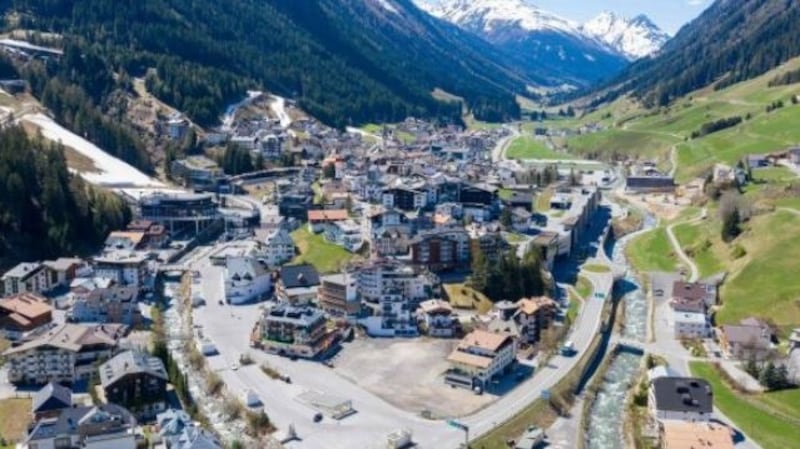
February 29th was a Saturday. That was the turnover day for the weekly packages, when one wave of tourists left and another arrived. Among the incoming skiers were dozens of Irish people, mostly arriving on Ryanair flights landing in the German airport of Memmingen.
The first case of coronavirus had been notified in Ireland that day. But for those arriving from Dublin, Ischgl seemed a big remove from the hotspot of northern Italy.
Eóin Wright from Kilmainham, Dublin was among a group of six from Ireland, all in their fifties, who arrived that day. On the same flight was another group of five friends, all from Munster, also in their fifties. They included Tipperary men Brendan Bourke and John Cormack, a former All-Ireland winning country hurler.
March 1st, 2020
The secondary school where the teenager was a pupil is closed down, with all parents and teachers being told to restrict their movements for 14 days.
Case number one in Ireland was a second-level student from northern Dublin. The family had gone on a skiing holiday in Italy during the mid-term break earlier in February. At that stage the virus was associated with a handful of villages in northern Italy and not with the Alps. The family flew home through Bergamo Airport and spent a few hours there. It is likely it was there the infection occurred.
At the time, the focus was on 11 small villages in that region and not the city. It was only later Bergamo became the epicentre of the virus in Italy with distressing images of overcrowded ICU units and coffins lined up outside morgues.
When the family returned home, the number of cases in most European countries outside Italy could have been counted on the fingers of one hand. The official HSE advice then applied only to those who arrived from a high-risk region (China, Far East, Iran, and northern Italy), or were a close contact of a confirmed case. They were told to self-isolate and contact their GP only if they were experiencing symptoms. That advice would not change until the middle of March.
The family read the HSE website on its return. Then one of the teenager’s siblings started developing symptoms, including fever. He was tested but was negative for Covid. In fact, he had caught the flu. Despite not displaying symptoms, the father insisted all be tested. It was then the other teenager was confirmed as a positive case.
The authorities might have been preparing carefully for this moment for many weeks, but, given all the build-up and anticipation, it was not a surprise the first case became such an enormous media event. Looked at a year later and through the prism of so many cases and deaths since then, the decision to shut down the teenager’s school now seems excessive.
But so did the coverage, which bordered on the hysterical, especially on social media where those unfortunate enough to contract the disease in the first weeks of March were subjected to a witch hunt on Twitter and Facebook. This is despite the fact they had followed all of the advice (which was to contact your GP only if you were displaying symptoms) and were blameless.
As it happened, the teenager remained asymptomatic throughout his 14-day quarantine – which in itself was telling.
March 2nd, 2020
Ireland remains in a containment phase, with one confirmed case currently in isolation and contact tracing is underway.
Eóin Wright is a strong skier. The 53-year old father of three had been going to Ischgl for 15 years because of its superb and technical ski runs.
“It’s more for advanced skiers. There was a group of six of us, from 53 to 57, all good skiers. Before we left Covid was not really an issue in Ireland. It was in Italy of course, but not in Austria we thought.”
Ischgl has a reputation as a party resort. But for Wright and his friends, it was all about skiing. “We were not big apres-ski people. We had a few nights out but for us we had gone there to ski.”
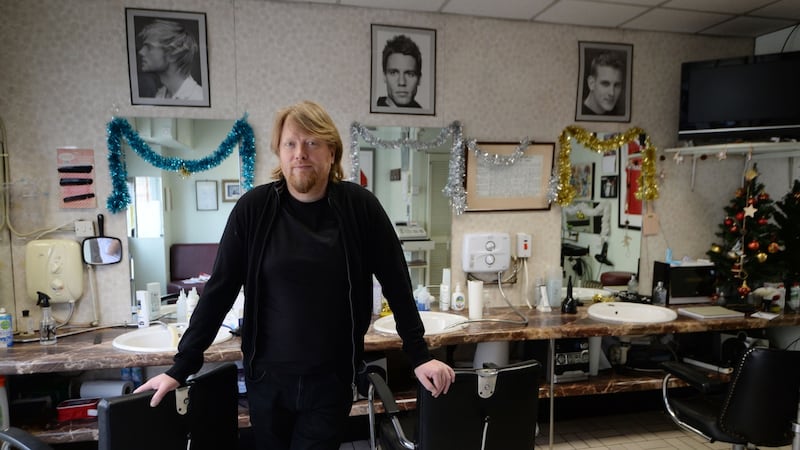
Brendan Bourke and his friends were also experienced skiers, enjoying the slopes during the day and the social life in restaurants and bars later on.
Today, Bourke recalls the bars so crowded that staff had to blow whistles to get through the throngs.
In an interview with the German media organisation Der Spiegel, his friend John Cormack talked about visiting Nikis Stadl bar, which was the source of a large cluster where the crowd sang along to German pop songs. The atmosphere does not vary from year to year. Nor do the songs – he knew the words of some of the German songs from previous visits. “You know what you are going to get,” he said.
March 3rd, 2020
A second case of coronavirus has been confirmed in the east of Ireland. The case is a female and is associated with travel from Italy. All non-essential travel to four regions in Italy is now being advised against. The previous advice was limited to 11 specific towns in the region.
Some believe, even argue, the coronavirus was in Ireland much earlier than late February. However, Dr Cillian de Gascún, director of the National Virus Reference Laboratory says: “The first laboratory confirmed case was on February 29. We started testing on February 7. We had been testing for the guts of a month and had not detected anything,” he says.
One unusual case emerged in Cork. An elderly man in hospital since February died in March. He was subsequently found to have been positive for Covid-19. That gave rise to a suspicion the virus might have been in the country at an earlier stage. Subsequently, it emerged the man visited a restaurant in Cork also visited by a person recently returned from Italy. Transmission happened there, it is believed.
If that was so, it might merely have pushed the date back a few days, rather than weeks and months. The weight of evidence shows the first cases in Ireland were associated with skiers returning from the Alps in Italy, France and Austria. But because many displayed no symptoms upon returning to Ireland, they might not have been tested as early as they could have been.
"The asymptomatic issue completely threw us," says Dr Máire Connolly, professor of public health, NUI Galway. Connolly spent the best part of two decades with the World Health Organisation, including responding to outbreaks of infectious and deadly diseases in developing countries, including Ebola, yellow fever, malaria, measles, typhoid and cholera. She is also leading the EU-wide PANDEM project to improve preparation for, and responses to, future outbreaks.
This was a new virus. And it behaved very differently from previous iterations. In the initial states, asymptomatic and presymptomatic transmission did not feature in the descriptions. The focus was on droplets and hand-washing, not aerosols. Face masks were not seen as necessary. There was no reference to a tell-tale sign, the loss of taste and smell.
The knowledge of its characteristics reminded you a little of JK Galbraith’s famous quote on the 1929 Wall Street Crash: “They did not know that they did not know.”
Connolly uses a colourful metaphor to put it in context. “The whole purpose of a virus is to perpetuate. If it kills you in the first five days, it is a boy racer virus and kills itself out.”
She contrasts Covid-19 (Sars-CoV-2) with the earlier Sars virus, which caused 8,000 cases and killed 800 people between 2002 and 2004. It was successfully contained.
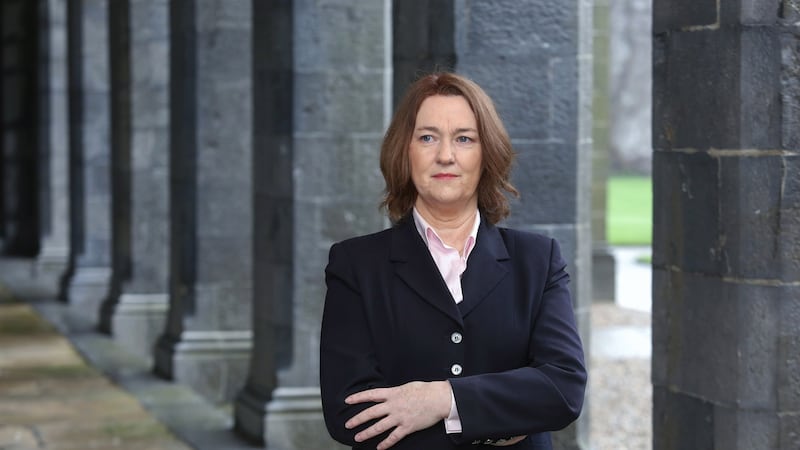
Connolly explains: “With Sars 1 people began to show symptoms after day five, and they did not become infectious until after that. That gave you a window of time where you could isolate and quarantine.
“But with this one it begins transmitting before people get sick, which is like the flu. A key ability of this virus is to transmit presymptomatically and asymptomatically.”
De Gascún agrees: We were learning from our experience of the original Sars in 2002 and 2003 where viral loading increased over time with the duration of illness and people were only infectious with the onset of symptoms.
“If we had known that earlier that would have had an impact on how we tackled things. Certainly, for example, the guidance around mask wearing changed when we realised that presymptomatic infection was a factor and people could have a high viral load before the onset of symptoms.”
Laboratory testing confirmed the provenance of the early cases were from Europe.
March 4th, 2020
Four new cases are confirmed in Ireland. The patients have all returned from skiing holidays in northern Italy.
As the Irish groups continue their skiing holidays, a development in Iceland changes everything for Ischgl. Groups of Icelandics who had been in the Austrian resort arrived back. Eventually 21 of them would test positive for Covid-19, and the country's chief epidemiologist Dr Torolfur Gudnason declared Ischgl a "high risk area".
The Icelandic authorities contact their counterparts in the region. However, one of the Icelandic skiers refers to the possibility of being infected by a passenger he sat near on the flight returning from Italy. The Austrian authorities seize on that line to talk down the possibility of Ischgl being a hotspot. Local business interests do not want to shorten the season.
Later that week, a Norwegian barman at a Ischgl restaurant tests positive. Fifteen colleagues subsequently do so, too. The restaurant was visited by both Irish groups who feature in this article.
Soon new clusters emerged in Sweden, Germany, Denmark and Norway. All are traced back to Ischgl. Norway estimated 500 cases could be linked directly or indirectly to the resort.
The Irish skiers – like all the holiday makers there – remain largely oblivious to the danger. Cormack told Der Spiegel his wife sent him a Whatsapp message on the 4th saying Iceland considered it a hotspot. They turn on the TV, but there is no reference to Ischgl on any channel.
March 5th, 2020
Seven new cases are confirmed. Four are linked to travel from northern Italy. There are now 13 confirmed cases in the State.
Dr Roger McMorrow is an anaesthetist and clinical director of the National Maternity Hospital. He is admired for his ability to organise. The new coronavirus had been playing on his mind since he saw the first images from Wuhan in December. He organised a few meetings in work and on February 12th sent a general email to all staff on preparation.
Like most hospitals, Holles Street did not have an plan in place that could cope with the storm that was coming. For one, there were critical shortages of PPE. “We had 100 SSP2 (surgical masks). That would not last one day dealing with a coronavirus patient,” he said.
The hospital had one negative pressure ventilation room (where exhausted air is driven out). The emergency department, single rooms, a ward and a theatre complex were converted to negative pressure rooms. “Babies will keep coming. So we needed a normal obstetrics service. We cancelled gynaecology and used the rooms as a coronavirus ward.”
It was done on a wing and a prayer. With PPE shortages, medical staff tried to wash and autoclave (sterilise) visors and gowns. Staff were limited to wearing face masks in certain areas.
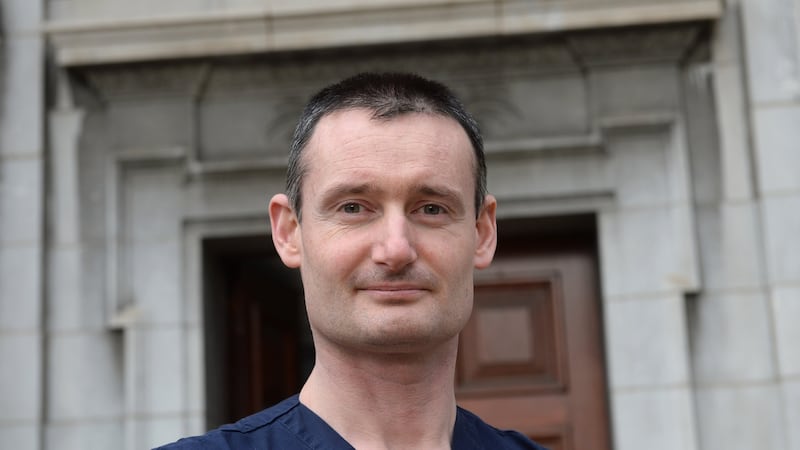
McMorrow put out an appeal on Twitter in the early days, and a company in Magherafelt that made blinds, developed a visor that the hospital could use. It arrived well before the first big deliveries from China.
The hospital ultimately dealt (successfully) with three very sick patients, all of whom came though, with one baby being delivered early.
A tenth, or slightly more, of the hospital’s staff were infected with the virus. As close contacts had to isolate, there were times when a fifth of all staff were absent. “That was a real burden”, he says.
“Paradoxically, professionally, it was an extraordinary time to be a doctor. Everything you prepared for in your life led up to this point. It was a massive challenge, but all the normal barriers were removed. I had thought the HSE was not dynamic, but it stuck by everybody and put the shoulder to the wheel.”
It was the first time in his career that Cillian de Gascún had seen a new virus emerge and watch it grow. “I was in training for Sars 1 and it never really came here. It has been interesting to watch the virus emerge and evolve and develop.”
The virus has become more efficient. “It did take this virus some time to find its feet in humans. It was not readily transmissible. We have seen over the intervening 12 months it has attained a reproductive number of between 4 and 6 whereas seasonal influenza is down at 1.4
“That is what has struck me. This virus has identified a new host, crossed the species barrier, managed to transmit and really travelled around the world in a short period of time,” he said.
“To my mind there is no reason to believe it will not become an endemic virus. It is unlikely with vaccination we will be able to eliminate it. We have only really managed that with smallpox and one of the polio virus types.
“It is not something that happens readily and with an R number of between four and six, it will be difficult to do especially when you have an asymptomatic transmission stage.”
March 6th 2020
Five new confirmed cases of Covid-19 in Ireland. Three are associated with travel.
Connolly talks about a pathogenic shift. It’s when a new virus emerges that human beings have no previous memory of. “The thing with the 1918 avian influenza strain [the Spanish flu] was that it really hit young people. In that strain the body’s immune response overreacted in many young males and led to 50 million deaths.”
Involved in pandemic planning in recent years, Connolly says everyone was taken aback by the level of disruption, and its impact.
New pandemics are possible. A century has passed since the Spanish flu, but there should be no complacency that it will take a century for the next one to arrive. “The one positive thing is there has been immense advances in vaccine technology and diagnostics and that will stand to us in the next pandemic,” she says.
March 7th 2020
One new case is confirmed – a man who returned from northern Italy. There are now 19 confirmed cases of Covid-19 in Ireland.
Eóin Wright and his five friends arrive home from Ischgl. All are feeling fine. “We heard about the Covid cases in Ireland and checked the HSE website just to be safe. Ischgl was not on the watchlist. There was nothing to be worried about.” Wright returned to work in the hairdressing salon he owns in Dublin. He was feeling 100 per cent.
Then on Monday night the group got a call from their host in Ischgl to tell them that 12 staff in the restaurant they visited had tested positive.
Wright looked at the website and saw that only those who were symptomatic should self-isolate. He rang a GP friend, Dave Coffey, who gave sage advice it might be best to take a week off work just as a precaution. It was just as well. On Thursday, one of the six tested positive. Wright sought a test on Friday. By Saturday he was beginning to feel ill.
“All six of us got Covid,” he says. “Two got sick. Two were asymptomatic. One got headaches. One lost his sense of taste and smell. I was one of the two who got sick. I went downhill quickly with a high temperature, headaches, aches and lethargy. I was sick for 12 days.
“There were 12 people in the salon and 20 clients that had to be tested. Everybody was negative which was a relief, as were my parents who are elderly.”
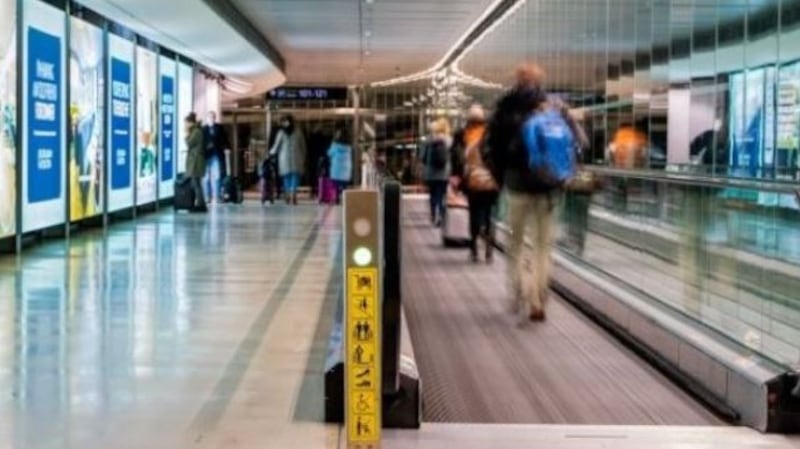
A year later, Wright is still overcoming long Covid symptoms. He has had back problems and his sense of taste and smell have only come back in the last six weeks.
He does not particularly blame Ischgl. “I don’t know if anybody at the time knew how bad it was or how dangerous it would be,” he said.
Out of Brendan Bourke and John Cormack’s group, five got Covid. Bourke began to show symptoms after three days home. Like Wright, recovery has been show, with taste and smell back only in recent weeks.
“I looked at the website for Ischgl a week after coming back. It showed people still on the slopes. I could not believe it. We were there when they got the warnings, and they tried to blame it on some guy coming from a plane going to Italy,” he says.
He worried about who he had been in contact with when he was presymptomatic. Thankfully, he deliberately stayed away from his 91-year old mother. She celebrated her 92nd birthday at the end of February.
But it was uncanny. Of the 11 people in the two groups, all tested positive.
Cillian de Gascún says travel plays a key role and highlights the need for controlling importations. But he also points out that focusing exclusively on travel is too simplistic. Skiing trips did seed Ireland’s first cases, but the virus would have come in another way, even though the tempest would have been a little later coming.











